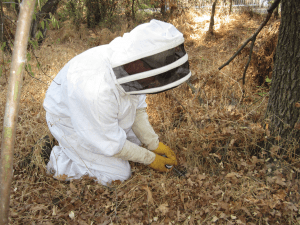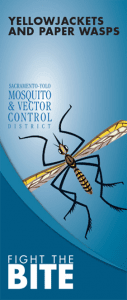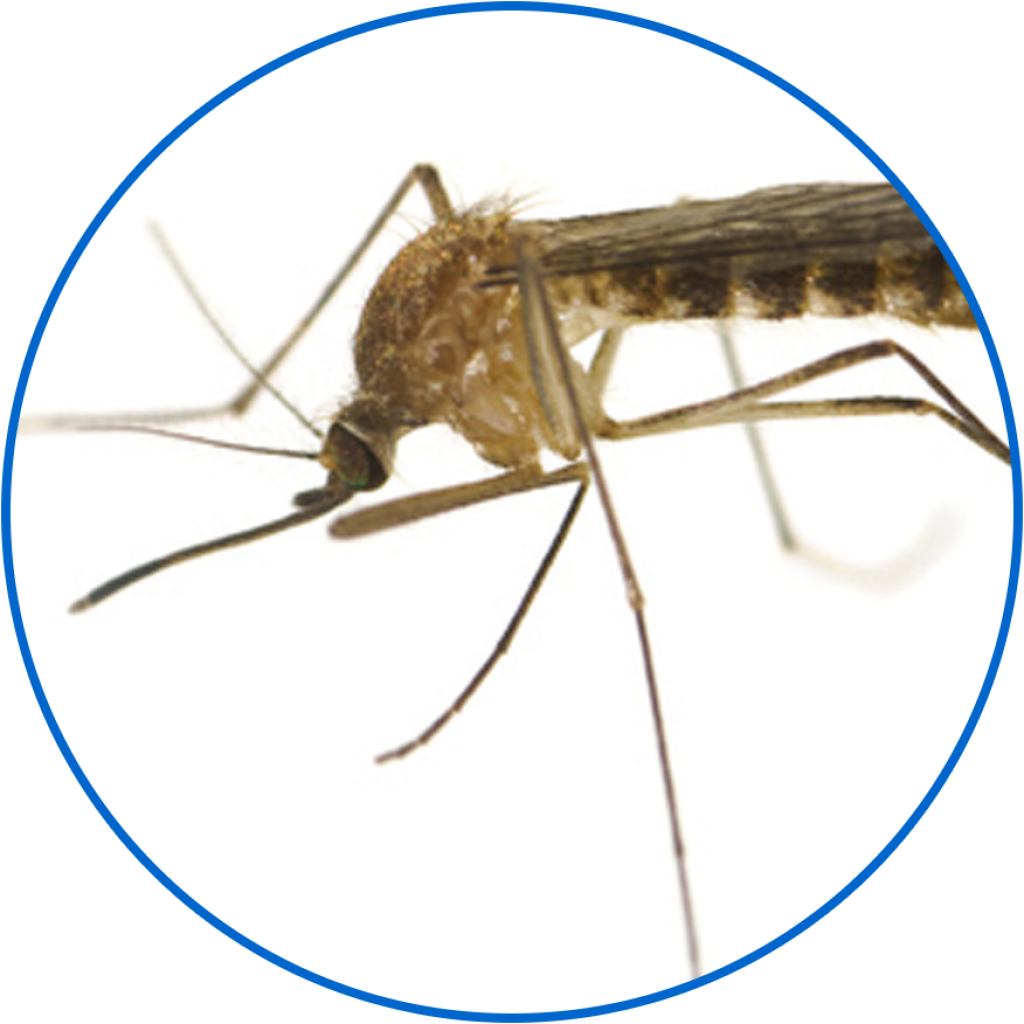YELLOWJACKETS
Yellowjackets are social insects that live in a nest containing workers, queens and males. Although they are often considered ill-tempered party crashers they can also be beneficial. Yellowjackets are pollinators that also feed on soft-bodied insects that can damage crops and shade trees. The two species that are commonly found in the Sacramento region are Vespula pensylvanica and Vespula germanica.
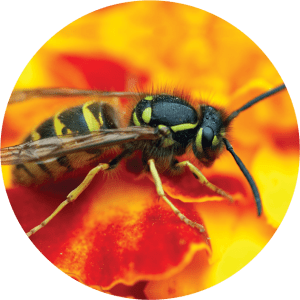
Appearance and Behavior
Yellowjackets are medium sized black wasps with yellow markings and black or yellow antennae. Workers are usually about a ½ inch long and appear short and stocky while the queen is larger at about ¾ of an inch. Workers are often confused with honey bees, but in contrast the body of a yellowjacket is not covered in dense hair.
Most of the time, yellowjackets are not aggressive and will not harm you if you stay out of their way. However, when a nest is disturbed, yellowjackets will swarm out and can inflict multiple stings that are painful and can be life-threatening to hypersensitive individuals.
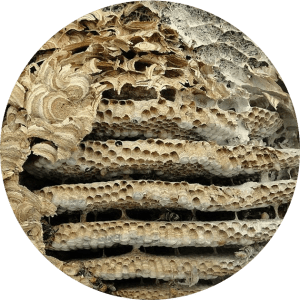
Nest
Depending on the type of yellowjacket, they may build either aerial or subterranean nests. Nests are built of plant and wood fibers and consist of multiple stacked combs completely enclosed by a paper envelope, except for a small entrance. Nests of most species are placed underground in rodent burrows or other soil cavities.
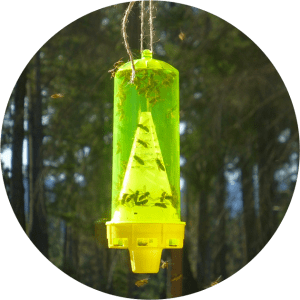
Control
During the summer months, foraging yellowjackets may become a nuisance in parks, campgrounds and other areas. Yellowjackets can be managed through sanitation by tightly covering garbage receptacles and limiting access to human food. Additionally, you can eliminate standing water to help reduce the water available for cooling the nest and drinking. Trapping can also help to reduce foraging workers, but it is not an effective method for eliminating yellowjackets. Commercially available traps use a chemical lure to attract foraging workers into a container with a one way passage. Once inside, they cannot escape and die. Traps should be placed in areas away from food and people.
PAPER WASPS
Paper wasps are social insects that live in colonies containing an alpha female, workers, and males. The European paper wasp, Polistes dominulus, is common to the Sacramento region. While yellowjackets and paper wasps are often confused, they have some distinct differences.
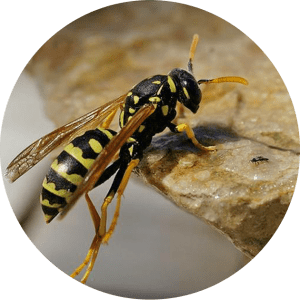
Appearance and Behavior
The European paper wasp is often mistaken for a yellowjacket because of its yellow and black coloration. One distinct difference is the orange-tipped antennae. Like other paper wasps, it is narrow-waisted, and during flight, its legs trail below in an extended fashion.
European paper wasps are more easily provoked than other wasps, and will sting more readily when someone nears their nest. An unsuspecting homeowner may be stung when attempting to change an outdoor light bulb, open a gate, or while gardening. Like other wasps, they can inflict multiple stings.
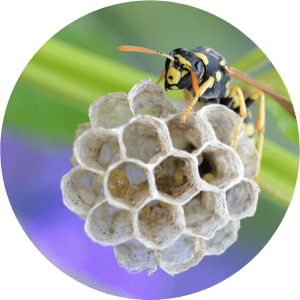
Nest
Paper wasps build nests of wood and plant fiber that consist of a single comb not enclosed by an envelope, the cells of the nest are clearly visible. Nests of the European paper wasp often contain less than 100 cells, but some contain more than 400. This wasp utilizes a myriad of nest sites including roof eaves, meter boxes, birdhouses, outdoor grills, benches and within shrubbery.

Control
Paper wasps may become a nuisance when they build a nest on or near your home. Every attempt should be made to eliminate suitable nest sites, such as holes in walls, cracks in eaves and holes in screen vents, but this is not always possible.
FIRST AID FOR STINGS
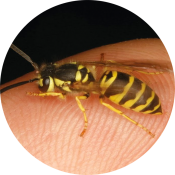
For any sting
Wash area with soap and cold water
Multiple stings/hypersensitive persons
Seek IMMEDIATE medical care and do not wait for symptoms to develop
YELLOWJACKETS PUBLICATIONS
CALL FOR CONTROL
Call the District at 800-429-1022 to request Yellowjacket service or visit our SERVICE REQUEST page.
